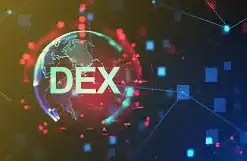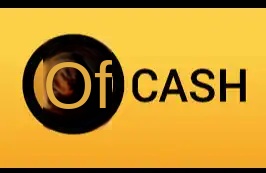Vitalik: The next five years will be critical for Ethereum, and blockchain is impacting the real world
In the ongoing ETHTAIPEI, Ethereum founder Vitalik accepted a media group interview. Overall, compared to the argument in the market that "Ethereum is no longer good", Vitalik is still full of hope for Ethereum. He talked about the current problems of Ethereum, but also talked about potential solutions, such as the POS problem. He once again mentioned "Rainbow Stake". This concept wants to solve the current problems similar to the high proportion of LIDO. However, it is still in the conceptual stage, and the market still needs to give Ethereum some more time.
Due to recent challenges such as Solana and modularization, the market has begun to doubt whether Ethereum can maintain its status as the world's number one public chain. Although Vitalik did not answer directly, from his words, the market needs to give Ethereum time, time wil tell.
The following is the content about Ethereum in this group interview organized by BlockBeats.
What does the Dencun upgrade mean to the Ethereum ecosystem?
Vitalik: The purpose of the upgrade is to significantly improve scalability and significantly reduce Layer2 (especially Rollups) transaction fees. This is achieved by creating a blob within each chunk, which data cannot be accessed by the EVM. We've seen Layer 2 fees drop significantly over the past week or two, in some cases by around 50x. It's important to note that these fees are likely to rise again because as the number of blobs users increases, the fees will eventually rise. We expect the number of blobs supported by the Ethereum chain to continue to increase significantly in the coming years.
Is this better than you expected?
Vitalik: I think it depends on what you mean by "good." From a technical perspective, the upgrade went very smoothly and the number of validators only dropped from 99% to 95%, which is better than any fork we have done before. Usage is currently surprisingly low, with the target being around three blobs per block, but average usage is only one blob per block, meaning blobs are very cheap right now. If you want to publish a blob, you basically just pay the Ethereum transaction fee. The high fees may be one of the reasons for the low usage, if the price of blobs goes towards zero then you could use them to back up an encrypted copy of your hard drive or something like that. Pretty cheap for a Rollup these days. I'm looking forward to an uptick in usage in the coming months.
What is the most transformative thing you foresee in the next five years?
Vitalik: Yes, I think the next five years will be critical for Ethereum because a lot of it was quite theoretical before. Smaller, smaller applications are now ready for real-world use. One of the big real-world impacts in the blockchain space is that the ideas generated in this space have filtered into the wider world in many underappreciated ways. For example, Reddit is going to IPO soon, and one of the things they did is give the very active contributors, moderators in the community the same terms of participation as institutional investors.
In addition, basically the biggest practical impact is stablecoins. People just use stablecoins to save and trade. First there needs to be very low fees. Historically Ethereum has not had these things, but in the next five years, Ethereum will. You've seen Layer 2, and projects like Base start to get closer and continue to improve. In the future, Ethereum can help stablecoins become more accessible, open, and decentralized without the need to trust vulnerable third parties.
Also, I expect that non-financial applications will start to have a greater impact. We’ve seen the success of Farcaster over the past year, and to some extent the success of Lens and other projects in creating alternatives to social media platforms. I think the particular benefit that decentralization brings to these projects is that basically anyone can write a new client, and if you have a new client, you can access and write the same content without having to build it from scratch Your network effects. I expect the Ethereum-based identity space to grow rapidly, the technology is improving rapidly, and I really hope it sees some mainstream use soon. One of the main difficulties that many people are worried about now is how to prove that an account on a certain platform is actually a person and not like a bot, or like a million bot accounts controlled by the same person. The problem is that when people need to solve this problem, people turn to centralized solutions, which is terrible, and I hope the Ethereum space can actually come up with some decentralized alternatives and make them truly accessible.
What do you think of the current challenges in Ethereum POS, and how SSF (single slot finality) and other upgrades can solve this problem?
Vitalik: I think the main challenges in POS right now are mainly related to various centralization risks. One of the concerns is around MEV, and another is the risk associated with staking and being a validator yourself. The challenge with MEV is that censorship risks are growing and relayers are emerging as another centralized role. These risks can be mitigated by enforcing tickets and inclusion lists. The way to think about inclusion lists is basically as far back as possible to Ethereum in 2016, where there were decentralized validators responsible for creating blocks, only here, we're talking about "Block" simply means a list of transactions, which transactions are included, because that's the most important thing from a fairness and censorship resistance perspective.
The other part has to do with the pledge itself. I recently did a poll series on Farcaster and I asked why not stake and why, the top answer was because they didn't have 32 ETH and the second was that it was too difficult to run a node. For the problem of running nodes being too difficult, we already had a pre-existing technology roadmap that was basically designed to solve that problem. In the future as a node, you won't need to store state locally, nor much of the history locally, so the amount of data you need to be a node will be reduced from multiple terabytes to being able to, in principle, run a node in RAM. Once we have this, resyncing and syncing for example will be much faster, probably only taking a few minutes. With the arrival of ZK-snarks, the requirements will be further reduced. I think in the long run running a node will feel like downloading some data and can be done on any computer. There are also new POS methods that involve sacrificing the requirement for each staker to participate in each consensus round. If you sacrifice this requirement, you can benefit from SSF. Rainbow Staking is one of these proposals.
There are many modular blockchain solutions now, and we have also seen some ideas. For example, Ethereum can be responsible for shared sorting, so what issues should Layer1 handle? What should be left to others to handle?
Vitalik: Modularity means that there are fewer and fewer single chains, and different components are completed by different parts, researcher Justin Drake is Big proponent of shared ordering on Ethereum, this is a vision. You can take a look at the work of Layer1 today. Layer1 is responsible for shared security and is a shared settlement layer. With Ethereum, each Layer2 has the ability to read any other Layer2 without relying on any centralized actor. Ethereum provides data availability for rollup, but it does not provide data availability for validium. Then sorted, the order in which transactions are selected is currently left to the discretion of each Rollup. I personally am neutral on the issue of shared sorting, I know some people support it, some people think that shared sorting is completely overrated, and they feel that the benefits of shared liquidity are not actually as great as imagined. For an average user, it doesn't matter whether the market depth is half a million dollars or a million dollars, you just need the market depth to be deep enough to handle your own transactions. They would also argue that cross-Layer2 MEVs are not actually that important and that any MEV between Optimism and Arbitrum can be decomposed.
For other types of functionality, I do hope that we can really expand the amount of data that Layer2 or Ethereum can directly support. In an ideal world, everything would be Rollup and Ethereum wouldn't handle data availability for everything, I'd like to see very high security stuff on-chain via Rollup.
Another big problem has to do with account abstraction. If your account has state that might need to change, especially if you have a key and you want to revoke the key and add a new one, if you want to change the algorithm, where does that state live? If you have accounts in 100 places, to upgrade and update your account, do you have to send the same data 100 times? One way to do this is that you have a rollup method with a minimal key store, that state lives in a specific place, probably a very neutral rollup, and then all the other layer 2s are able to call it to prove every transaction they are accessing What is the current status of . But these are early stage ideas,
How does ZK solve the trust problem of non-technical individuals, and how do they know that ZK truly achieves identification? If you have a system that theoretically gives you some ZK level of privacy, how do you as a user know that you're actually getting that level of privacy?
Vitalik: I see this problem as a continuation of a problem that already exists with Ethereum, which is, if you put your assets Putting it into a smart contract instead of just giving your assets to someone, so how do you actually know that your smart contract doesn't have a backdoor where that person can take it away or take your funds at any time? Now we have the contract reading capabilities through Etherscan, where people can publish source code and Etherscan inspects the source code, which is a great tool for developers, but also for sophisticated users. For the average user, they can't read a thousand lines of code by themselves.
We are seeing wallets become more sophisticated, giving more warnings about whether you are interacting with one application or if you are not interacting with others An application interaction that has been interacted with. I guess what I ultimately want to see is, I want to see DApp user interfaces become versioned. So like you know, just uploading the interface to IPFS instead of the website, then every update has to be a blockchain transaction. You can have the authorization of that transaction controlled solely by the team, with no servers that can be hacked to force updates. Also, the opinions of those high-quality researchers and auditors need to be aggregated, and the wallet plays a very important role here, like it is an important active assistant that helps users aggregate all this information. The tools used on Ethereum should be used on ZK, such as publishing Cairo code and verifying it on something like Etherscan, which can be done.
What are the benefits of integrating AI with cryptocurrencies, and how will this reshape the industry?
Vitalik: A lot of people are very curious about the intersection of AI and cryptocurrency and have been asking for the past 10 years, I think It makes sense to ask this question because at a very high level, AI and cryptocurrency are two very important technology trends of our time, and there is a sense that AI tends to be centralized and cryptocurrencies tend to be decentralized. Centralization, there should be something like yin and yang complementing each other. But the question is, can you get practical examples of applications that actually work? In a post I made about two months ago, I tried to analyze this problem and tried to identify some specific applications where it would make sense. So I talked about, number one, AI participating in prediction markets or other types of markets, and number two is AI as part of the wallet, helping users understand the online and on-chain environment that they're interacting with. The third is using cryptography, including things like ZK SNARKS and ZKML, MPC. The fourth is safe and private AI, which if successful can be used in other fields. Of these, I think the first two are short-term and the latter two are actually more speculative.
Another is the role of AI in debugging code. One of the biggest challenges in this area is bugs in the code. If we can do that, then we may finally have ZK-EVM that is guaranteed to be bug-free. The more bugs we can reduce, the safer the space will be.
Are you more active on Farcaster than Twitter?
Vitalik: Farcaster was fun, the quality of my participation there was higher. I'm also looking forward to seeing an alternative client for Farcaster, it's not a server, it's a chain, you can make your own client and then your client can read or write the same content, so people using Warpcast can See. Another thing I'm happy about is that Farcaster is easy enough to be used outside of the community, something a lot of other apps don't do.
Welcome to join the official BlockBeats community:
Telegram Subscription Group: https://t.me/theblockbeats
Telegram Discussion Group: https://t.me/BlockBeats_App
Official Twitter Account: https://twitter.com/BlockBeatsAsia


 Forum
Forum Finance
Finance
 Specials
Specials
 On-chain Eco
On-chain Eco
 Entry
Entry
 Podcasts
Podcasts
 Activities
Activities
 OPRR
OPRR







